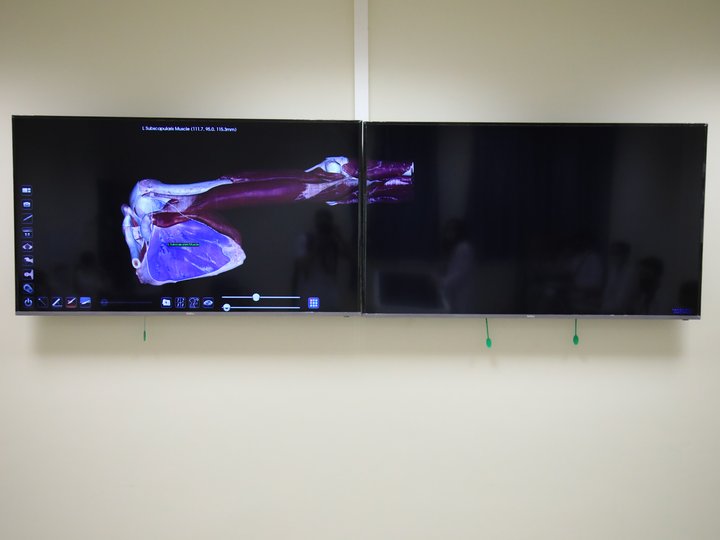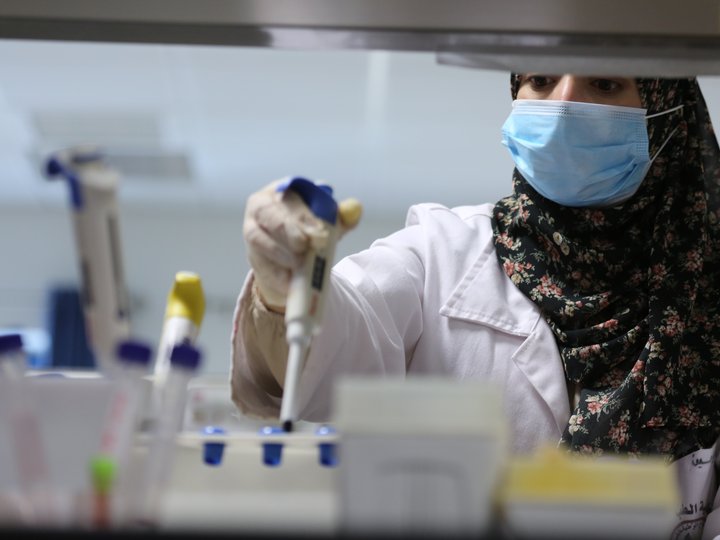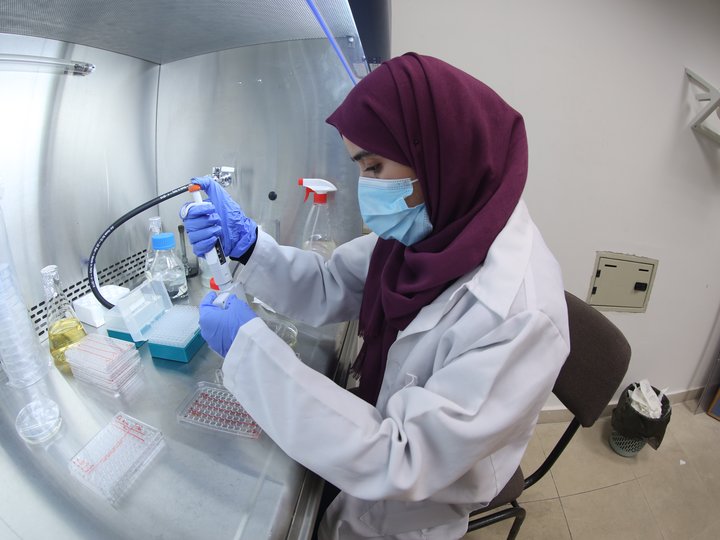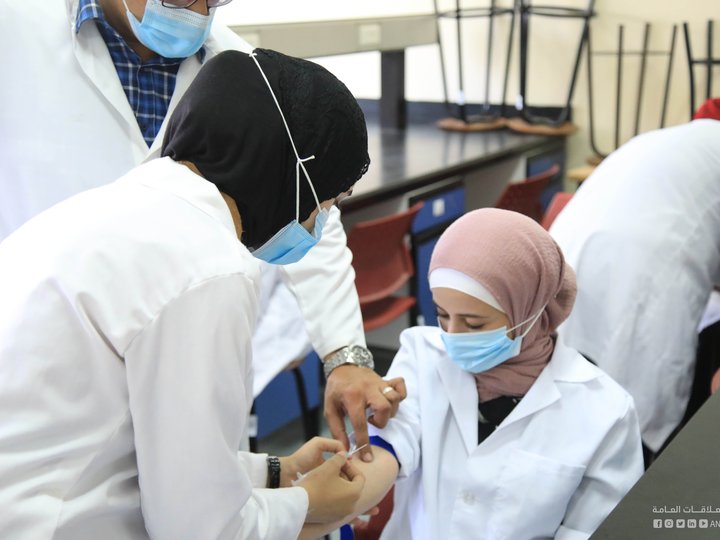
- The virtual anatomy lab aims to apply the theoretical aspect of the anatomy course to facilitate the educational process.
- This purpose is met with the use of the Anatomage Table- Virtual Anatomy Dissection Table which is an advanced 3D anatomy visualization system for anatomy and physiology education and is being adopted by many of the world’s leading medical schools and institutions.
- It displays the human body in a three-dimensional image and provides students the opportunity to virtually dissect a human body and learn about each of its layers. Using the device, students are introduced to a novel way of teaching where organs, muscles, bones, blood vessels, and nerves are displayed in a three-dimensional and interactive manner.
- Anatomage Table - Virtual Anatomy Dissection Table is a device thet was newly imported by An-Najah National University in 2020.
- The device allows exploration and learning of human anatomy beyond what any cadaver could offer.
In an interactive 3D image, the device displays:
- Multilayer interactive 3D images of human specimens that can be cut and viewed along any plane, enlarged or rotated on any axis for better viewing.
- All human systems (the skeletal system, the muscular system, the cardiovascular system, etc.).
- Different human organs.
- The blood vessels (arteries, veins, and capillaries) and the direction of the blood in them.
- Nerves and nerve plexuses.
- Well-dissected human specimens (Prosections).
- Miscellaneous X-ray images.
- Histological sections of different organs and areas of the body.
- Various anatomical variations and a large number of pathological differences


The anatomy laboratory is used to teach various anatomy courses, such as anatomy of the thorax, abdomen and pelvis, anatomy of the back and limbs, and anatomy of the head and neck in addition to the embryology course. The laboratory provides students with plastic models of various body organs, skeletons, muscles, and cross-sections of different areas of the human body. Moreover, the laboratory could also be used to dissect some animal organs that are similar to human body organs and present them to students in order to further enhance the educational process.


The Microbiology Lab allows students to isolate culture and identify many of pathological bacteria from different sites in addition to some pathological fungi. Moreover, students learn to do many immunological tests that diagnose some immunological diseases.

In the Clinical Biochemistry Lab, the students learn how to test the body chemistry such as measuring blood glucose level, urea level, lipid profile, and enzymatic level in order to understand the metabolic reactions that occur inside the body cells.


The Laboratory of Physiology serves students of medicine and pharmacy in their second year. It aims through its practical course material to strengthen the relationship between theory and applied materials in physiology. In order to achieve that, this laboratory has provided many of the instruments and tools that enrich the learning process and increase the capabilities of students to conduct practical physiological experiments. Blood pressure manometer, electrocardiogram, spirometer, glucometer and centrifuge are some of these tools and instruments.


In the Pathology Lab, the students learn how to diagnose different body tissues from real body organs and learn how to take a biopsy and test it under the microscope in order to see different histological diseases.
